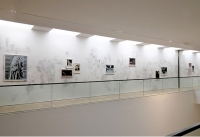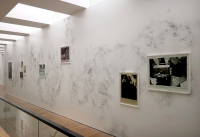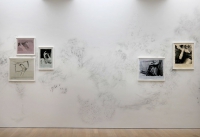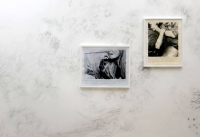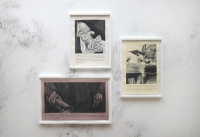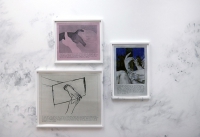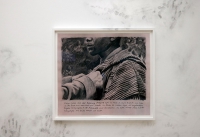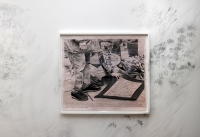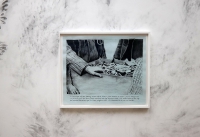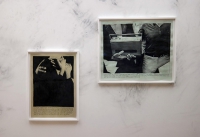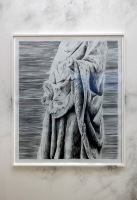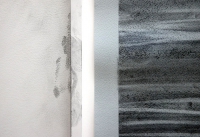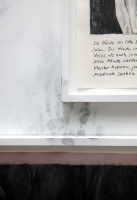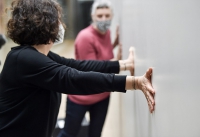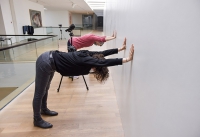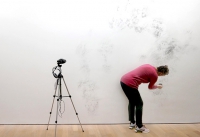Vom Berühren und Begreifen, Kunstmuseum Stuttgart, 2021
site specific installation for the permanent collection on the occasion of Hans Molfenter Preis
Documentation on ARTE Atelier A — Katrin Ströbel
"Vom Berühren und Begreifen" consists of a wall drawing and 14 framed watercolor and charcoal drawings arranged on the reworked wall surface. The piece’s leitmotif is “touching", a theme, that, already relevant to the museum due to the nature of the institution, took on an additional, explosive force during the pandemic. Since the spring of 2020, the meaning of touching or not touching has been redefined in a multitude of ways, significantly changing our relationship to the way we touch surfaces, objects, living creatures, and fellow human beings. The artist’s work references these changes to our contemporary world, some of which are obvious, some less so.
One by one, 35 employees from the art museum’s various departments touched the wall’s surface. The artist asked them to approach the wall while having a conversation about their respective job at the museum. Ströbel’s questions focused on the daily actions of people’s hands and brought about an evocative harmony between thought, speech, and action. As the employees described their routine hand gestures and their fingers and palms felt their way along the wall, they were aware that the artist would later apply fingerprint powder to render the traces visible and fix them on the wall as part of her artwork. The completed mural is a collective portrait of the museum team, an image of the many hands that, together, make the museum’s numerous operations possible. It references activities that usually take place behind the scenes, kept well away from the presentation of the art and even negated. And while a visit to a museum usually carries with it a ban on contact primarily applying to the works of art, a far greater reserve has since established itself as the rule of conduct.
The symbolic potential of hand gestures is also illustrated by the 14 framed drawings that were placed in thematic groups on the wall. They reproduce tactile moments that were recorded in photographs of historical events and in artworks from the museum’s collection. Ströbel places at the center of her drawings the hands of people and groups of people that are often marginalized, are either barely visible or not at all, yet whose hands, gestures, and acts are nonetheless inscribed in the history of the city in a variety of ways.
